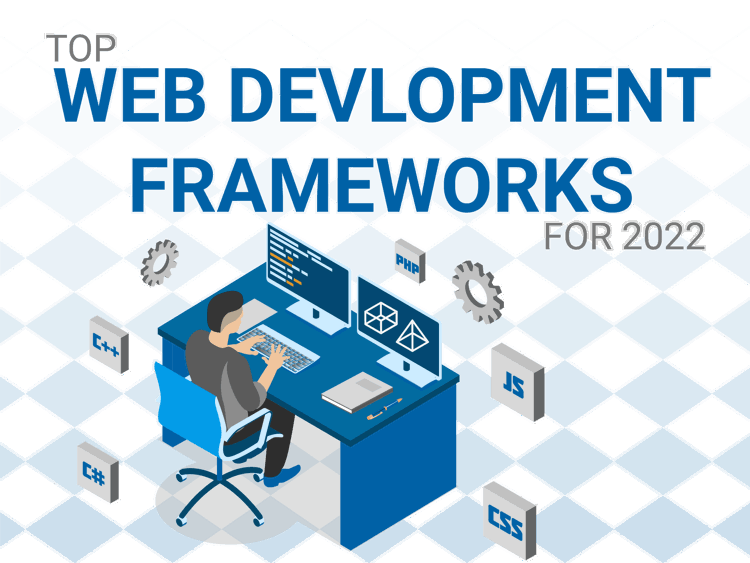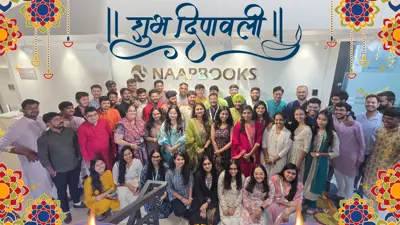Top Web Development Frameworks

The proliferation of digital tools is good news for developers. The industry is taking web development seriously. This means that today's engineers are free to use more and more resources. New tools help create standards that facilitate development and make collaboration more productive. Of these, the web framework is especially useful. It eliminates the need to reinvent the wheel in every development project. It also provides developers with a vocabulary to effectively communicate with others in the industry. Web frameworks help your code interact properly with the web to provide end-users with a smooth and consistent experience
What is a Web Application Framework?
A web framework (WF) or web application framework (WAF) is a software framework aimed at supporting the development of web applications such as web services, web resources, and web APIs. Web frameworks provide a standard way to build web applications and deploy them on the World Wide Web. Web frameworks are intended to automate the overhead associated with common web development activities. For example, many web frameworks provide libraries for database access, template frameworks, session management, and often facilitate code reuse. Often aimed at developing dynamic websites, but can also be applied to static websites.
Classification of Framework Architecture
The architecture of a framework defines the relation between the different components of the framework. The architecture decides how the various layers will interact with each other. It is important to use a well-understood architecture as it largely defines how your application functions.
Model View Controller
Many frameworks for web apps work on Model View Controller (MVC) models. To split data models with business standards from the UI, MVC architecture is preferred. It is a good practice as it usually fosters code reuse, modularized code, and permits various interfaces.
Model-View-ViewModel (MVVM)
Frameworks, such as KnockoutJS and VueJS use the Model-View-ViewModel or the Model-View-Binder architecture model. In this architecture, the view layer acts as a controller and converts the data objects from the Model layer into manageable components. Since the View layer handles all the user requests directly, the data binding is much more straightforward.
Push-based vs Pull-based
Generally, MVC frameworks observe a push-based architecture, also known as ‘action-based.’ They adopt actions that do the necessary processing and then accordingly ‘push’ the data to a view layer to furnish the outcome. Some examples of frameworks are Spring MVC, Ruby on Rails, Sails.js, Django, and CodeIgniter. Another option to this architecture is ‘pull-based,’ also termed as ‘component-based.’ This is a kind of framework that starts with the view layer, which in turn can ‘pull’ outcomes from diverse controllers as required. Some examples of pull-based architectures are JBoss, Tapestry, Lift, Wicket, Micro, and JavaServer Faces. Struts, ZK, Play, and RIFE use both push-based and pull-based application controller calls.
Three-tier organization
The three-tier organization applications are well-regulated in three physical tiers: application, database, and client-side. This database is usually a relational database. The application possesses business logic that runs on a server and corresponds with the client utilizing HTTP. The client uses a web browser that runs the HTML code developed by the application layer.It's not surprising that there are many web development frameworks out there, many of which are very popular.
 These 5 most popular web development frameworks are expected to play a major role next year.
These 5 most popular web development frameworks are expected to play a major role next year.
1) Laravel
Larval's USP is simple, elegant, and easy to read. Taylor Otwell developed Laravel in 2011. Like any other modern development framework, it runs on an MVC architecture model that uses PHP. Laravel supports the API and contains a large number of packages that can extend your reach. Laracasts is a tutorial website with thousands of videos about Laravel, PHP, and the front-end technologies of the Laravel ecosystem. Laravel includes many features such as dependency injection and server-side rendering. It has proven to be the perfect framework for small web apps and websites such as Neighborhood, Travel, Deltanet, and Lender.
- Language: PHP
- Framework Link: https://laravel.com/
- Github Link: https://github.com/laravel/laravel
- Stable Release: Laravel 7.15.0
2) Django
Django is one of the reliable back-end web development frameworks to help you develop robust web applications. Compared to other frameworks like nodejs, it uses conventions and DRY patterns rather than settings. Django provides developers with the tools and techniques to create secure websites and implements security features in the framework for the best web development. Great for meeting the fast deadlines and the demanding demands of experienced developers. Django applications are extremely scalable, fast, versatile, and secure. Companies using Django are Pinterest, Disqus, YouTube, Spotify, Instagram, and other popular giants.
- Language: Python
- Framework Link: https://www.djangoproject.com
- Github Link: https://github.com/django/django
- Stable Release: Django 3.0.7
3) ASP.NET
ASP.NET is a popular web development framework that is extremely useful for creating dynamic web applications for PCs and mobile phones. Microsoft invented it to allow programmers to create live websites, applications, and services. Asp.net Core is a new version of Asp.net known for speed, productivity, and performance. Powerful and lightweight. Well-known companies using ASP.NET include TacoBell, GettyImages, and StackOverflow.
- Language: C#
- Framework Link: http://www.asp.net/
- Github link: https://github.com/aspnet
- Stable Release: Asp.net Core 4.8
4) Spring
The Spring Framework, invented by Pivotal Software, is one of the most widely used web frameworks. The Spring framework, developed for the Java platform, allows you to create simple, flexible, and fast applications and systems. Although it does not specify an exact programming pattern, this backend framework is gaining popularity in the Java community by adding the Enterprise JavaBeans model. Java applications can use their main features, but extensions help build apps on the Java Enterprise Edition platform. Developers primarily use Spring to create powerful, high-performance applications. Companies using Spring include Deleokorea, Intuit, Zalando, MIT, and Zillow.
- Language: Java
- Github Link: https://github.com/spring-projects/spring-framework
- Stable Release: Spring 5.2.5
5) Angular
Angular is one of the best front-end web development frameworks for developers. This is a TypeScript-based open source web application framework maintained by the Google Angular team. With Angular, you can build rich, highly functional web applications. Our Angular development team uses Angular to create responsive front-end and client-side apps for startups, entrepreneurs, businesses, and NGOs. Applications are so easy to maintain that many apps are built using Angular. Sites that use Angular include Upwork, Lego, PayPal, and Netflix.
- Language: JavaScript
- Framework Link: https://angular.io/
- Github Link: https://github.com/angular/angular
- Stable Release: Angular 9.1.11
Why should you use Web frameworks?
You don't need a web development framework to create a web application. But it does provide tools that can simplify the process and make it hassle-free. It's a best practice to use a framework, as it makes it nearly impossible to develop, test, and maintain your app. Let's talk about some of the features of the best web application frameworks. Top useful development tools for developers
Top useful development tools for developers
- Simplifies Programming Languages
- Optimizes Development Process
- Reusability
- Standardized Code Practices
- Testing and Debugging
A web framework acts as a crucial element in the software development process. Each of the frameworks mentioned above has its characteristics and advantages. Using these popular web development frameworks is highly recommended as it can speed up your development process. Along with these, you can also use some web development tools to assist you in the process. But it is important to choose the right framework for your project or you can get stuck with a robust framework like Ruby on Rails for developing a simple blogging site or a SPA. We at Naapbooks can help you find your ideal web framework by focusing on your business requirements and clients to avail higher traffic rates for your website. Our team of expert developers will assist you throughout the whole development process.




















